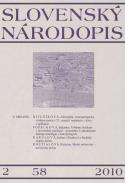Mesto univerzite - univerzita mestu. Prípadová štúdia vzťahu vysokoškolskej inštitúcie a spoločenstva mesta Zvolen
City to the university - university to the city. The case study of the relation of college institution and city community of Zvolen
Author(s): Katarína KoštialováSubject(s): Anthropology
Published by: SAV - Slovenská akadémia vied - Ústav etnológie a sociálnej antropológie Slovenskej akadémie vied
Keywords: city Zvolen; Technical University of city Zvolen; students of the univercity; interaction; rituals
Summary/Abstract: This paper is concerned with researching the existence of a university and its influence on a small town. The object of investigation was the Technical University (formerly the University of Forestry and Woodworking) and the town of Zvolen. The author studied where, how, and by means of what and whom the university was presented in the town and perceived by the town‘s inhabitants. She investigated the university in the broader context of the town, with emphasis on the university↔town interaction. The author focused on the „inner“ and especially the „outer“ life of the university, its cultural, economic, social capital and their presentation. In this paper the university is perceived as an institution which apart from its inductive-educational, scientific-research and cultural-social functions also fulfils a function of cultural reproduction. Simultaneously it is a bearer of socio-cultural values and traditions, status rankings, and the most varied bonds, communicative relations and meanings. The paper also points to the reasons for the emergence, preconditions, formation and establishment of the university in the town, which are reflected not only in the town‘s socio-spatial structure but also in the cultural capital of its inhabitants (for example, the educational structure). The existence of a school whose orientation is unique and specific in Slovakia is mirrored also in the construction of a network of scientific-research workplaces in the town in question, which is regarded as the centre of forestry and woodworking. Currently there is no other town in Slovakia where one can find so many forestry research and teaching establishments of state-wide relevance. Contacts and social networks of the town‘s inhabitants with the university are constructed also through the medium of the TU‘s employees, who are themselves mainly Zvolen people, and by a 177 dynamic group of students. An important indicator also is the economic capital which the university represents in a small town. It is expressed in employment opportunities and in the form of other material resources. The author states that the university students form a social group which contributes to creating urban subcultures and in their rituals display a consciousness of common culture and identity and the continuity of forestry traditions in this area. The existence of the university also brings the town‘s inhabitants a specific cultural-social and educational dimension which is, as regards the school‘s orientation, different from other towns. The activities which the school and the students carry out (erecting maypoles, the folk festival, lectures, exhibitions and sporting activities) are not practised exclusively on the university grounds but are rather part of the urban space, and the town‘s inhabitants take part in them deliberately or casually. The urban society views them positively, as characteristic and typical of the town of Zvolen, which is identified with them.
Journal: Slovenský národopis
- Issue Year: 58/2010
- Issue No: 2
- Page Range: 176 - 193
- Page Count: 18
- Language: Slovak

